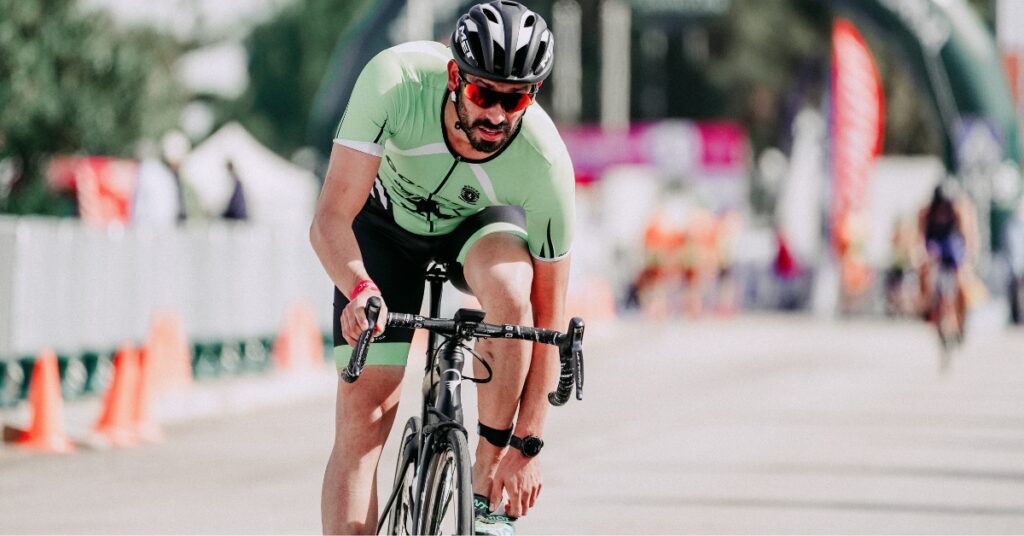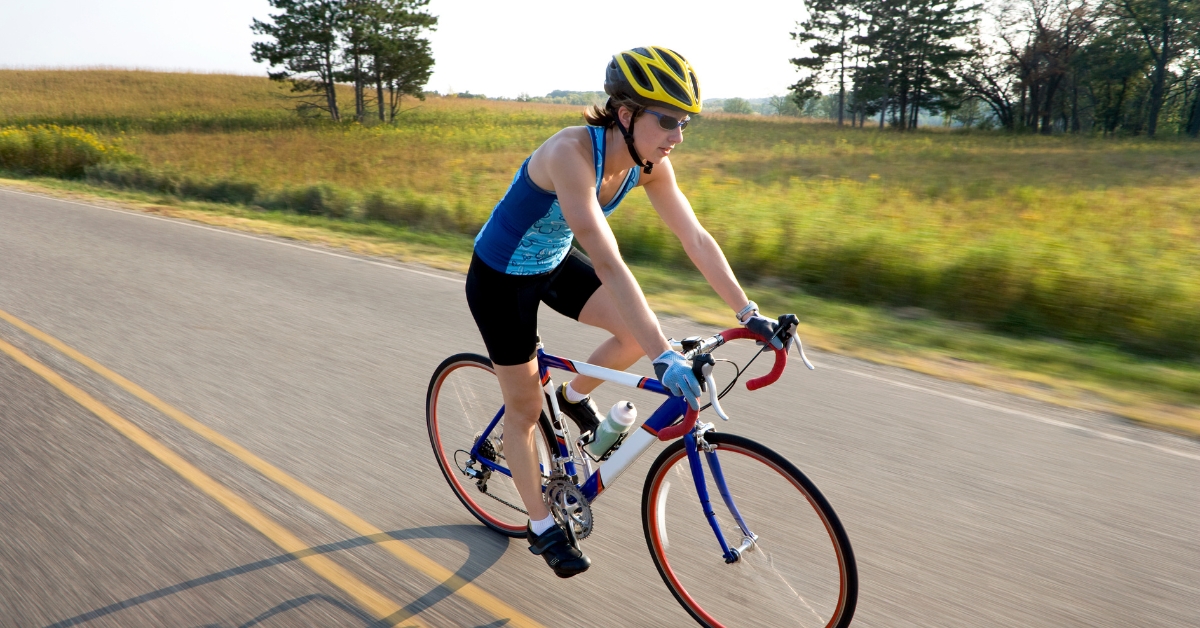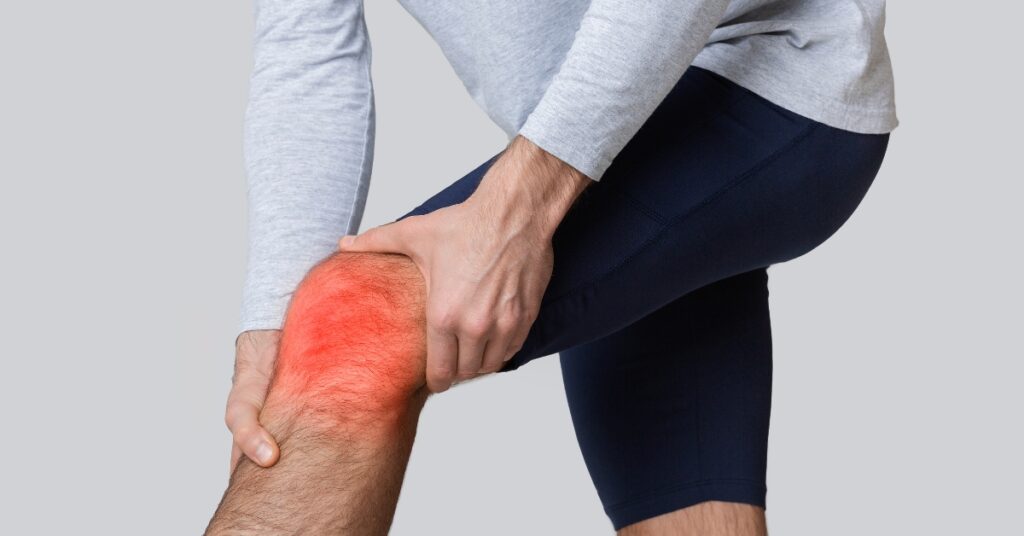You’re on your bike, chasing that rhythm, when it hits: sharp pain in your knee that pulls your focus and forces you to slow down. You’ve stretched, adjusted your seat, and even swapped pedals, but the discomfort keeps showing up. Knee pain cycling is more common than most riders realize, and it’s not just about pushing too hard or aging out of your sport. In fact, the real causes often hide in plain sight: mechanics, habits, and muscle imbalances you don’t even know you’re reinforcing.
Here’s what you’ll discover in this guide:
- The most overlooked causes of knee pain when cycling
- Why seat height and foot position matter more than you think
- Simple fixes that reduce pain and improve power
- When to seek help before things get worse
Let’s break down what’s going on and get you back to riding strong, without wincing at every turn.

Knee Pain: Cycling Causes of Knee Pain
Whether you’re training for Tulsa Tough or coasting through Turkey Mountain trails, knee pain while cycling can ruin the ride before the fun begins. If you’re starting to feel nagging discomfort around the knee joint, you’re not alone—and there’s a reason your pain might be more than just soreness.
Lateral Knee Pain and Iliotibial Band Syndrome
Pain on the lateral aspect of your knee often points to iliotibial band syndrome, especially if it flares up on long rides or hills. This common overuse injury happens when the IT band rubs against the outer thigh bone near the knee joint.
When your saddle height is off or your cleat position places your knee into excessive valgus, you’re placing more strain on the lateral structures. As a sports physical therapist, I assess your bike fit and perform movement screening to correct faulty mechanics that keep triggering inflammation.
We often start with:
- Manual therapy to release soft tissues along the IT band
- Strength work for the glute muscles and VMO muscle
- Bike fit modifications to improve knee alignment

Anterior Knee Pain and Patellofemoral Pain Syndrome
That deep ache in the front of the knee? It could signal patellofemoral pain syndrome, especially if it worsens after long climbs or repetitive knee extension. This condition involves irritation in the patellofemoral joint where the kneecap meets the thigh bone.
Your training load may have ramped up too quickly, or your knee angle during the pedal stroke may be too sharp. These biomechanical factors increase patellofemoral compressive force and lead to inflammation.
To decrease stress on the patellofemoral joint, I often recommend:
- Addressing knee cap tracking with VMO muscle activation drills
- Mobility work for tight hamstrings and hip flexors
- Adjustments to saddle position and knee flexion angle
If you’re tired of dealing with knee pain while cycling, it’s time to work with someone who understands cyclists.
At Vitality Tulsa, we’re passionate about helping you stay on your bike without pain, no matter how long your rides are or how often you train.
Get in touch today at (918) 265-4688 to schedule your evaluation and take the first step toward pain-free cycling.
Medial and Posterior Knee Pain
Cycling-related knee pain in the medial or posterior area is less common but still needs targeted treatment. Medial pain can arise from poor cleat alignment or excess inward collapse during pedaling, leading to strain on the inside of the knee joint.
Posterior knee pain is often linked to tight hamstrings or overuse of the posterior cruciate ligament. If your saddle is set too far back, it can force repetitive knee extension under poor mechanical alignment.
In these cases, I often focus on:
- Targeted stretching and foam rolling of tight muscle groups
- Strengthening the knee flexors and glutes to stabilize joint movement
- Refining cleat position and adjusting saddle fore-aft

Training Load and Recovery
Tulsa’s springtime race season brings an influx of cyclists increasing their mileage in short bursts. This shift can lead to cycling overuse injuries if recovery and tissue capacity aren’t in sync.
As a physical therapist, I help you structure training that promotes joint-specific power production while allowing adequate time for healing. Knee pain in cyclists often reflects more about workload than weakness.
Here’s what we consider:
- How many hills and intervals you’ve added over the past two weeks
- Whether your rides include enough variability in position and intensity
- How you’re supporting recovery through nutrition, mobility, and rest
Why Bike Fit Matters More Than You Think
You can have strong muscles and solid endurance and still develop cyclist’s knee if your fit is off by even a few millimeters. A proper bike fit addresses knee movement efficiency, saddle height, cleat alignment, and even ankle joint positioning.
I work closely with professional bike fitters in the Tulsa area to ensure you’re not fighting your own bike. Pairing fit changes with sports physical therapy leads to faster results and longer pain free miles.
Let’s keep your knee moving the way it was built to—smooth, stable, and strong for every ride you take, from Riverside trails to Osage hills.
Treating Cycling-Related Knee Pain at Vitality Tulsa
Cycling offers many health benefits, but when knee pain starts to creep in, it can quickly take the joy out of your rides.
At Vitality Tulsa, we take an individualized, hands-on approach to treating cycling injuries so you can stay active without persistent pain.

We Don’t Guess—We Assess
If you’re dealing with anterior, posterior, medial, or lateral knee pain, we start by evaluating your movement patterns and bike setup. Understanding how your knee joint is functioning during your pedal stroke helps us target the true cause.
We analyze:
- Knee alignment through your full range of motion
- Muscle imbalances affecting your hip and knee joints
- Cleat position, saddle height, and knee angle efficiency
We dig deeper than surface symptoms. You get a plan designed to match your lifestyle and riding goals.
Why Cyclists Trust Sports Physical Therapy
Knee pain in cyclists often stems from overuse injuries, poor mechanics, or sudden increases in training load. Sports physical therapy lets us correct these issues while building your strength and control.
You’ll benefit from:
- One-on-one sessions with a Doctor of Physical Therapy
- Manual therapy and soft tissue release for tight muscles
- Targeted strength training for glutes, VMO muscle, and knee flexors
- Guided mobility work to improve knee extension and knee flexion mechanics
Every session keeps your goals in mind, whether you’re riding in Tulsa’s River Parks or training for the next Gran Fondo.

How We Help You Ride Pain Free Again
Our team treats cycling-related injuries with a whole-body approach. You’ll not only get out of pain but improve how you move, pedal, and recover.
We focus on:
- Alleviating knee pain with hands-on care and customized programs
- Improving joint-specific power production and control during high-load rides
- Addressing tight hamstrings, hip flexors, and lateral structures through mobility work
- Helping you understand how training stress, recovery, and fit all impact your knee joint
You won’t just feel better. You’ll move better and ride longer without discomfort.
Book Your Evaluation Today
If you’re tired of dealing with knee pain while cycling, it’s time to work with someone who understands cyclists.
At Vitality Tulsa, we’re passionate about helping you stay on your bike without pain, no matter how long your rides are or how often you train.
Get in touch today at (918) 265-4688 to schedule your evaluation and take the first step toward pain-free cycling.

